The cultivation method of Sedum crassulata how to raise Sedum
Jingtian tree has a tall and beautiful crown, green stems and leaves all the year round, and white flowers grow at the top, which is very elegant and chic, which is very suitable for home decoration. let's take a look at the breeding methods of Sedum crassulata.
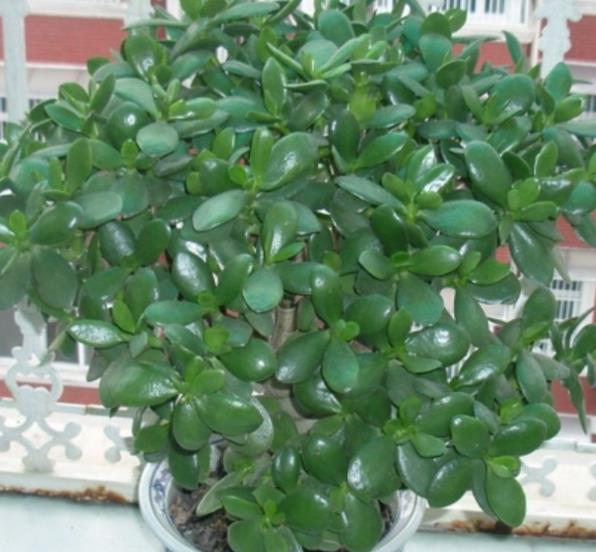
Basic information of Sedum crassulata
Sedum tree (scientific name: CrassulaarborescensWilld). ), also known as Mu Babao, Babao, Yushu, etc., swallows have thick palms and leaves, green four seasons, peculiar leaf shape, solemn plant shape, easy cultivation and easy management. Suitable for potted plants, it can be displayed on the balcony or embellished on several tables in the room, which is very elegant and elegant. The crown is straight and beautiful, the stems and leaves are green, and the terminal white flowers are very elegant and chic. If matched with a pot rack, gravel processing into a small bonsai, palm appropriate bonsai, can also be cultivated into an ancient tree old pile posture, decorative tea table, desk more attractive.
Culture methods of Sedum crassulata:
1. Soil: sedum trees have low requirements for soil, so it is appropriate to choose rotten leaf soil of 2 to 3 and garden soil of 1 to 3 and add a small amount of river sand as culture soil, and a little long-acting fertilizer such as hooves can be put at the bottom of the basin as base fertilizer. In order to facilitate drainage, the bottom of the basin should also be covered with some gravel or tiles.
2. Watering: sedum trees have strong drought tolerance and can grow under dry conditions, and their roots are afraid of water stains. If there is water in the flowerpot, or if it is watered too frequently, it will easily cause rotten roots, so mastering water is the key to culture.
3. Sunshine: when the sedum tree is kept in the semi-shade in summer, or shaded by 50%, the leaf color will be more beautiful. In spring and autumn, because the temperature is not very high, it is necessary to give it direct sunlight to facilitate its photosynthesis to accumulate nutrients. In winter, keep it indoors where there is bright light for maintenance.
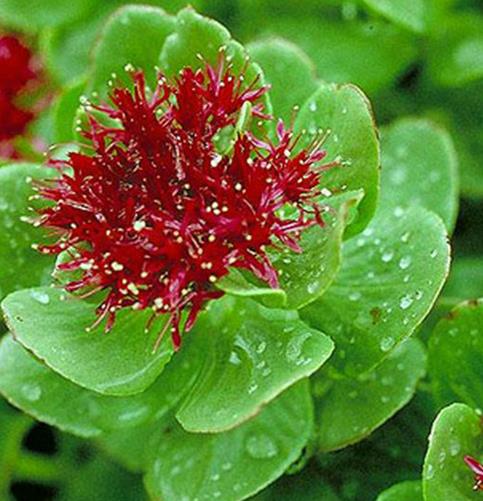
4. Temperature: the optimum growth temperature of Sedum crassulata is 15 ℃ ~ 32 ℃. It is afraid of high temperature and muggy heat, and goes into dormancy when the summer temperature is above 33 ℃. Avoid cold frost, the overwintering temperature needs to be kept above 10 ℃, and when the winter temperature drops below 7 ℃, it will also enter a dormant state. If the ambient temperature is close to 4 ℃, it will die of frostbite.
5. Fertilization: Sedum trees grow faster and should not be fertilized too much, otherwise, the branches and leaves will grow too much, which will affect the tree shape and reduce the ornamental value. In the growing season, it only needs to apply 2Mel three times of thin fertilizer and water, but it can not be applied in winter.
6. Insect pests: the main diseases of sedum tree are charcoal disease and leaf spot disease, which can be sprayed with 1000 times of methyl topiramate wettable powder. The indoor ventilation is poor, and the stems and leaves are vulnerable to shell insects. They are sprayed with 1000 times of omethoate emulsion.
7. Pruning: sedum trees grow relatively fast, so attention should be paid to shaping and pruning to make their plant shape more simple and elegant.
Sedum tree is one of the common varieties of green plants for people to decorate at home, the plant type is beautiful, and the cultivation is simple. The breeding method of sedum tree is introduced here. I hope it will be helpful to you.
Swallow palm, also known as Yushu, sedum tree, bean palm, thick skin, belongs to crassulaceae, green lock dragon genus; swallow palm is native to southern South Africa, is an evergreen shrub. Like warm, drought-resistant, not cold-resistant, like sunlight, but also resistant to semi-shade, grow well under scattered light conditions. Like fertile sandy loam. The winter temperature is not lower than 7 ℃.
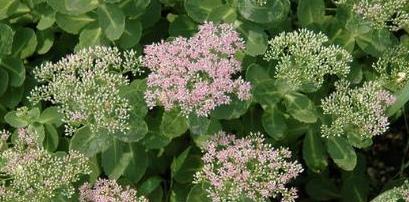
Every spring, swallow palms need to be changed and re-added to the fertile soil. The growth rate of swallow palm is faster, in order to keep the plant shape plump, fat and water should not be too much. During the growth period, watering 2mi 3 times a week, hot and humid July-August must be less watering, the swallow palm itself is more resistant to drought. Midsummer, such as poor ventilation or excessive lack of water, will also cause leaves to turn yellow and fall off, which should be maintained in a semi-shady place. Watering decreases gradually after the beginning of autumn. Outdoor cultivation, to avoid being washed by heavy rain, otherwise too much water in the roots, it is easy to cause rotten roots. When changing the basin or putting the room in autumn every year, you should pay attention to shaping and pruning, while keeping your figure.
Swallow palms are usually propagated by cuttings. In the growing season, the thick and fleshy apical branches were cut, the length of which was 8m / m, dried a little, then inserted into the sand bed, and rooting for about 3 weeks. It can also be inserted with a single leaf, cut leaves and wait to dry. Then insert the sand bed, take root about 4 weeks after insertion, and put on the pot when the root length is 2 mi / m 3 m.
The cultivation and management of swallow palm is simple and extensive, but there is indeed some work to be done in order to achieve plump and robust plant shape and full bloom of trees as scheduled. First of all, the swallow palm grows faster, and the autumn turns cool from August to October every year, and the swallow palm begins to resume growth. It is necessary to strengthen the light again and remove the shading equipment. At this time, fertilization and watering are in principle the same as in spring. Frosts Descent before entering the greenhouse, put it indoors in the sunny place, stop fertilizing, watering should be controlled, basically once a month, the amount of water is 1/2 of that in summer.
Sedum is an evergreen shrub. Like warm, drought-resistant, not cold-resistant, like sunlight, but also resistant to semi-shade, grow well under scattered light conditions. Like fertile sandy loam. Next, the editor takes you into the world of Jingtianshu. There are also appreciation pictures of Sedum trees.
How to raise sedum trees
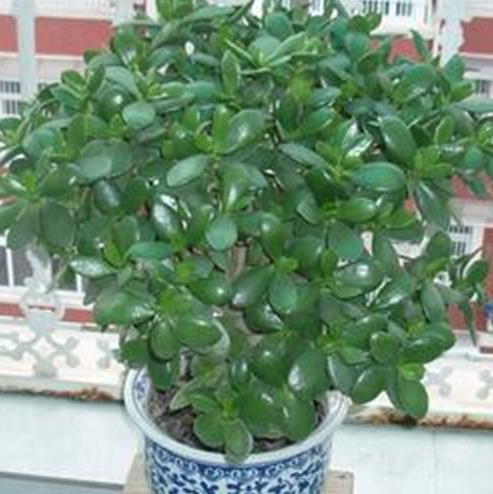
1. Humidity management of Sedum crassulata: like dry air environment, overcast and rainy days last too long, easy to be infected by bacteria. For fear of rain, keep the leaves dry at night. The optimum air relative humidity is 40 ℃ and 60%.
Temperature management of Sedum crassulata
2. The optimum growth temperature of Sedum crassulata is 15 ℃ ~ 32 ℃. It is afraid of high temperature and muggy heat, and goes into dormancy when the summer temperature is above 33 ℃. Avoid cold frost, the overwintering temperature needs to be kept above 10 ℃, and when the winter temperature drops below 7 ℃, it will also enter a dormant state. If the ambient temperature is close to 4 ℃, Sedum crassulata will die of frostbite.
Temperature Management of Sedum crassulata-spacing
Sedum tree in summer: 1), strengthen air convection, so that the temperature inside the tree can be emitted; 2), put it in the semi-shade, or give it 50% shade; 3), spray Sedum tree properly, 2 or 3 times a day. In winter: 1), move to a brightly lit place for maintenance; 2) when the sedum tree is outdoors, it can be wrapped in a film to survive the winter, but the film should be opened every two days when the temperature is high at noon to let it breathe.
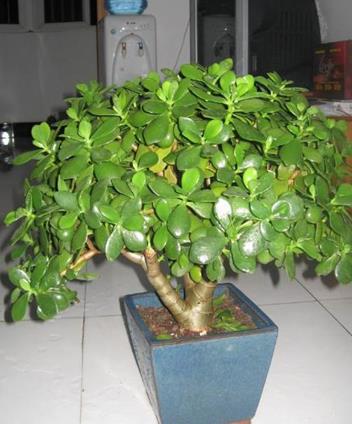
Light Management of Sedum crassulata
3. When the sedum tree is kept in the semi-shade in summer, or when it is shaded by 50%, the leaf color will be more beautiful. In spring and autumn, because the temperature is not very high, it is necessary to give it direct sunlight to facilitate its photosynthesis to accumulate nutrients. In winter, keep it indoors where there is bright light for maintenance. Usually put in the indoor maintenance, should be placed in the southeast near the doors and windows, in order to receive light, and every month or one and a half months, to move to the outdoor maintenance for two months, otherwise the leaves grow thin, yellow, new branches or petioles slender, elongated internodes, in a state of overgrowth.
Fertilizer and Water Management of Sedum crassulata
4. Sedum crassulata has strong drought tolerance and can grow under dry conditions, but this does not mean that it does not water or fertilize it; its roots are afraid of water stains, if there is water in the flowerpot, or if it is watered and fertilized too frequently, it's easy to cause rotting roots. The principle of watering Sedum trees is "dry and wet, dry, dry, water, water,
Shaping and pruning of Sedum paniculata
Some people think that the phenomenon of leaf wilting is caused by insufficient nutrition and too small pots, so they quickly change large pots and apply more fertilizers such as broth, resulting in wilting and decay of leaves. The reason is not nutrition, but because sedum trees are overwatered, basin soil is too wet, drainage is not smooth, or drought for a long time and sudden overwatering. At the same time, if the sedum tree has been kept indoors for a long time without the sun, and then suddenly moved out of the outdoor by strong light exposure, the same phenomenon will occur.
1. Humidity management of Sedum crassulata: like dry air environment, overcast and rainy days last too long, easy to be infected by bacteria. For fear of rain, keep the leaves dry at night. The optimum air relative humidity is 40 ℃ and 60%.
Temperature management of Sedum crassulata
2. The optimum growth temperature of Sedum crassulata is 15 ℃ ~ 32 ℃. It is afraid of high temperature and muggy heat, and goes into dormancy when the summer temperature is above 33 ℃. Avoid cold frost, the overwintering temperature needs to be kept above 10 ℃, and when the winter temperature drops below 7 ℃, it will also enter a dormant state. If the ambient temperature is close to 4 ℃, Sedum crassulata will die of frostbite.
Temperature Management of Sedum crassulata-spacing
Sedum tree in summer: 1), strengthen air convection, so that the temperature inside the tree can be emitted; 2), put it in the semi-shade, or give it 50% shade; 3), spray Sedum tree properly, 2 or 3 times a day. In winter: 1), move to a brightly lit place for maintenance; 2) when the sedum tree is outdoors, it can be wrapped in a film to survive the winter, but the film should be opened every two days when the temperature is high at noon to let it breathe.

Light Management of Sedum crassulata
3. When the sedum tree is kept in the semi-shade in summer, or when it is shaded by 50%, the leaf color will be more beautiful. In spring and autumn, because the temperature is not very high, it is necessary to give it direct sunlight to facilitate its photosynthesis to accumulate nutrients. In winter, keep it indoors where there is bright light for maintenance. Usually put in the indoor maintenance, should be placed in the southeast near the doors and windows, in order to receive light, and every month or one and a half months, to move to the outdoor maintenance for two months, otherwise the leaves will grow thin, yellow, new branches or petioles slender, elongated internodes, in a state of overgrowth.
Fertilizer and Water Management of Sedum crassulata
4. Sedum crassulata has strong drought tolerance and can grow under dry conditions, but this does not mean that it does not water or fertilize it; its roots are afraid of water stains, if there is water in the flowerpot, or if it is watered and fertilized too frequently, it's easy to cause rotting roots. The principle of watering Sedum trees is "dry and wet, dry, dry, water, water,
Shaping and pruning of Sedum paniculata
Some people think that the phenomenon of leaf wilting is caused by insufficient nutrition and too small pots, so they quickly change large pots and apply more fertilizers such as broth, resulting in wilting and decay of leaves. The reason is not nutrition, but because sedum trees are overwatered, basin soil is too wet, drainage is not smooth, or drought for a long time and sudden overwatering. At the same time, if the sedum tree has been kept indoors for a long time without the sun, and then suddenly moved out of the outdoor by strong light exposure, the same phenomenon will occur.
Related
- Wuhan Hospital Iron Tree Blooming Result Was Instantly Frightened by the Gardener Master
- Which variety of camellia is the most fragrant and best? Which one do you like best?
- What is the small blue coat, the breeding methods and matters needing attention of the succulent plant
- Dormancy time and maintenance management of succulent plants during dormancy
- Minas succulent how to raise, Minas succulent plant pictures
- What are the varieties of winter succulent plants
- How to raise succulent plants in twelve rolls? let's take a look at some experience of breeding twelve rolls.
- Attention should be paid to water control for succulent plants during dormant period (winter and summer)
- Watering experience of twelve rolls of succulent plants
- Techniques for fertilizing succulent plants. An article will let you know how to fertilize succulent plants.



